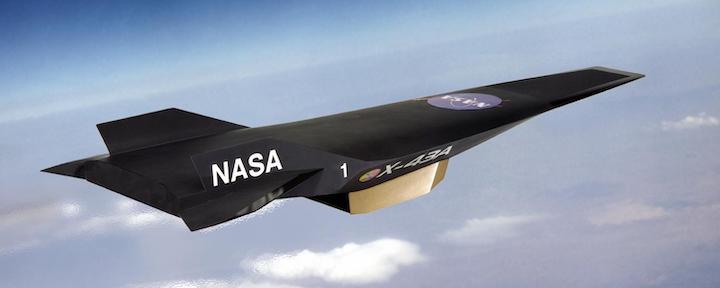Iain Boyd has an unusual specialty: He studies the insanely fast.
The aerospace engineer specializes in hypersonic flight—or when vehicles hit speeds of roughly 4,000 miles per hour or more, the kind of conditions that spacecraft face when they’re plunging through the atmospheres of Earth or even Mars.
At those velocities, vehicles can smash apart the oxygen molecules in the air around them, destroying heat shields and frying electronic components. The burgeoning field of hypersonics research seeks to find new ways for planes and spacecraft to better navigate that blistering environment. That takes expertise in aerodynamics, the chemistry of air and of other planetary atmospheres, the behavior of materials and more.
“It exists somewhere in between aero and space,” said Boyd, a professor who joined the Ann and H.J. Smead Department of Aerospace Engineering Sciences in 2019. “Anything with ‘hyper’ in the title has to be complicated.”
And it’s a field that’s growing in importance. NASA has plans to return astronauts from the moon using a hypersonic capsule. Nations like the U.S., Russia and China are actively developing missiles that can fly at hypersonic speeds. Further into the future, hypersonic fleets may carry tourists to and from space on a regular basis.
To prepare for that new reality, the College of Engineering and Applied Science at CU Boulder recently launched a new research initiative focusing on hypersonic vehicles. The college will also introduce a new hypersonics certificate for graduate students this summer. The research draws on partnerships with NASA, the Department of Defense and aerospace industry.
Boyd sat down with CU Boulder Today to talk about the research initiative and how hypersonics research may one day help humans to colonize Mars.
We’re hearing a lot about hypersonic flight recently. Why is that?
This summer was a big milestone for the U.S. space industry with SpaceX taking astronauts to the International Space Station and bringing them back again. When you come back from orbit, and first enter the Earth’s atmosphere, that occurs at highly hypersonic conditions of about 17,000 miles per hour. When we send a rover to the surface of Mars, it’s entering the atmosphere under hypersonic conditions.
Related to that is the rise of commercial companies in space. If you have space tourism bringing people up to space and bringing them back again, that involves hypersonics as well.
And defense also plays a big role in those discussions, right?
Where the interest in hypersonics has really changed is on the national security side of things. A couple of important countries around the world have started to develop and deploy hypersonic systems. If the U.S. does nothing else, it has to figure out how to defend against them.
What makes studying hypersonics challenging?
These vehicles are moving really, really fast. As they move through air and reach these really high speeds, they heat the air up through friction. It’s just like if you rub your hands together, and they get hot.
They get so hot that the temperatures of the gases are as hot as the surface of the sun—many thousands of degrees. As that hot air interacts with the surface of the vehicle, it can start to degrade or erode it, which is a process called ablation.
How do researchers at CU Boulder hope to address these issues?
We have experts in the aerodynamics and experts in the materials and so on. The idea is to bring those people into the field and hopefully find efficient and better designs by taking into account multiple phenomena at the same time.
As the technology behind hypersonics has evolved, so have our tools for studying extremely fast flight. What does that mean for researchers?
We have the tools these days, both in computer modeling and experiments, to look deep, investigating the processes molecule by molecule. How does an independent oxygen atom interact with a carbon heat shield? And it turns out that’s very important. In nature, everything happens one reaction at a time.
How are we employing those tools here?
As you’re entering Mars in your hypersonic capsule, your capsule is ablating away, which means you’re losing material, and that’s by design. But the shape of your vehicle is also changing as you move along the trajectory.
Right now, the way NASA and industry do things is they just think about the aerodynamics on its own and the response of the materials on its own, but each of these things strongly affects the other. We have a NASA-funded project now working to optimize the hypersonic vehicle design by accounting for the shape change all along its trajectory.
What does that mean for human astronauts?
Fifty percent of all missions to Mars fail. Right now, NASA goes through this long procedure of designing a mission over years. They launch, they fly out to Mars, and they will land somewhere. But the uncertainty in that landing point is something like 20 or 30 kilometers.
That would be pretty challenging if there are people involved because we would have sent places for them to shelter, food, power, and if they land too far away from where that stuff is, it may not go well. So we need to be able to do better.
Quelle: University of Colorado Boulder

